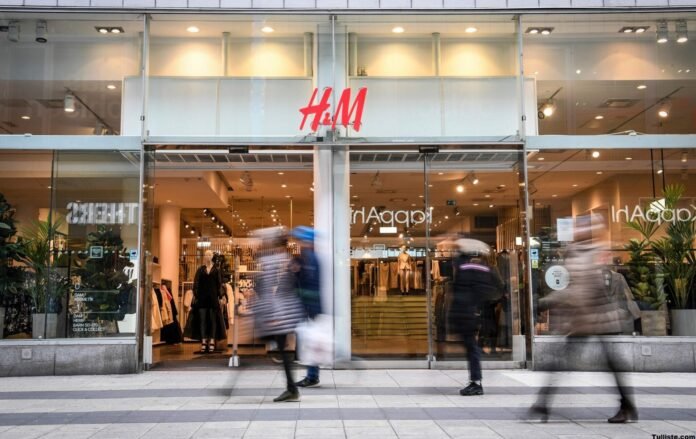Introduction to New York’s Fashion and Retail Industry
Welcome to the vibrant world of fashion and retail in the heart of New York City! From iconic designer boutiques to trendy streetwear stores, New York is a mecca for all things style and shopping. In this blog post, we will dive into the dynamic landscape of the fashion and retail industry in the Big Apple, exploring how traditional retailers are adapting to the rise of e-commerce, navigating through the challenges brought by COVID-19, and embracing innovative strategies to stay ahead in this ever-evolving market. Join us on this exciting journey as we uncover what’s trending in New York’s fashion scene and peek into the future of retail in this bustling metropolis.
The Rise of E-commerce and its impact on traditional retailers
With the rise of e-commerce, traditional retailers in New York are facing a new era of challenges and opportunities. Online shopping has transformed the way consumers browse and purchase products, leading to a shift in shopping habits. The convenience of shopping from the comfort of home has attracted a large customer base to online platforms.
As e-commerce continues to grow, brick-and-mortar stores have had to adapt their strategies to stay competitive. Many retailers have invested in creating seamless omnichannel experiences for customers, blending physical retail with digital offerings. This integration allows them to reach a wider audience while providing a personalized shopping experience.
Despite the impact on traditional retailers, e-commerce has also opened up new avenues for growth and innovation. Companies are leveraging data analytics and technology to optimize inventory management, marketing strategies, and customer engagement. By embracing these advancements, retailers can remain relevant in an increasingly digital landscape.
The rise of e-commerce signals a significant transformation in the fashion and retail industry in New York. Traditional retailers must continue evolving their business models to meet the demands of today’s tech-savvy consumers while staying true to their brand identity.
The Impact of COVID-19 on New York’s Fashion and Retail Scene
The Impact of COVID-19 on New York’s Fashion and Retail Scene has been profound. The once bustling streets of Manhattan, lined with high-end boutiques and iconic department stores, suddenly turned quiet as lockdowns were enforced. Consumers shifted their shopping habits online, forcing brick-and-mortar retailers to adapt quickly or risk closure.
Fashion shows were canceled or moved to virtual platforms, changing the way designers showcased their collections. The pandemic highlighted the importance of sustainability in fashion and accelerated the trend towards ethical and eco-friendly practices.
Retailers had to implement strict health and safety measures to reassure customers and employees. Many businesses embraced contactless payments, curbside pickup, and virtual shopping appointments to stay afloat during these challenging times.
As New York slowly reopens, the fashion industry is navigating a new normal. Adapting to evolving consumer preferences will be key for businesses looking to thrive post-pandemic.
Innovative Strategies adopted by Fashion and Retail Companies in New York
The fast-paced world of fashion and retail in New York City demands constant innovation to stay ahead of the game. Companies are embracing technology like never before, integrating virtual reality experiences into their stores and launching personalized shopping apps to enhance customer engagement.
Some brands are investing heavily in sustainability initiatives, from using eco-friendly materials to implementing environmentally conscious practices throughout their supply chain. This not only appeals to a growing number of socially conscious consumers but also helps reduce the industry’s environmental impact.
Others are focusing on creating seamless omnichannel experiences by blending online and offline shopping through features like click-and-collect services or pop-up shops. By meeting customers where they are most comfortable shopping, companies can cater to diverse preferences and increase brand loyalty.
Moreover, collaborations between fashion houses and tech companies have led to groundbreaking innovations such as smart clothing embedded with sensors for health monitoring or interactive dressing rooms that suggest styling options based on customer preferences. These partnerships push boundaries and redefine the way we experience fashion.
The Future of Fashion and Retail in New York: Predictions and Projections
As we look ahead to the future of fashion and retail in New York, one thing is certain: change is inevitable. With technology evolving rapidly, the industry will continue to adapt and innovate.
Consumers are increasingly seeking personalized experiences, pushing retailers to embrace digital solutions like virtual fitting rooms and AI-driven recommendations.
Sustainability will also play a significant role as more brands prioritize eco-friendly practices and materials. The rise of second-hand shopping and rental services reflects a growing awareness of environmental impact.
Brick-and-mortar stores will need to offer unique in-store experiences to compete with online giants. Pop-up shops, immersive installations, and exclusive events can draw customers looking for something beyond just products.
The future promises exciting opportunities for those willing to think outside the box and embrace change in this dynamic landscape.
How Small Businesses are Thriving in New York’s Competitive Market
Small businesses in New York have been carving out their niche in the competitive fashion and retail market. With a focus on unique offerings and personalized experiences, these enterprises are capturing the attention of discerning consumers. By leveraging social media platforms to connect with their target audience, small businesses are able to create a loyal customer base.
Many boutique stores in New York are championing sustainability and ethical practices, resonating with eco-conscious shoppers. This commitment to responsible fashion not only sets them apart but also attracts like-minded individuals who value transparency and authenticity.
Innovative collaborations between small retailers and local designers are also proving successful, bringing fresh perspectives and limited-edition collections to the market. The agility of these businesses allows them to adapt quickly to changing trends and consumer demands, keeping them ahead of larger competitors.
By fostering community engagement through pop-up events, workshops, or online forums, small businesses are building relationships beyond transactions. This sense of belonging creates lasting connections that go beyond traditional retail interactions.
Conclusion
The fashion and retail industry in New York continues to evolve and adapt to the changing landscape. With e-commerce on the rise and the impacts of COVID-19 still being felt, companies are finding innovative ways to stay competitive. Small businesses are thriving by embracing creativity and personalized experiences for their customers.
As we look towards the future, it is clear that New York will remain a key player in the global fashion and retail scene. By staying agile, leveraging technology, and focusing on customer needs, companies can navigate challenges and seize opportunities in this dynamic market. The state of fashion and retail in New York is a testament to resilience, creativity, and endless possibilities for growth.


